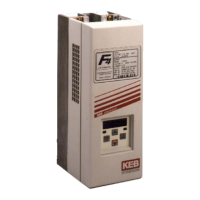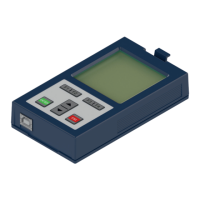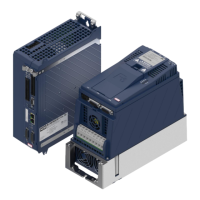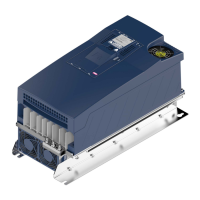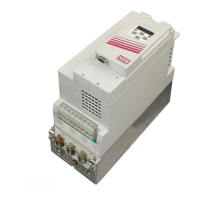5.3 Serial Speed Overview
5.3.1 DIN66019II Serial Protocol
The DIN66019II serial protocol consists of various services, which are defined telegram
structures for serial communication between controller and F6 elevator drive.
DIN66019II services 49 and 50 are supported. There is an independent watchdog timer
for the serial interface. The node ID is adjustable from 1 to 128, and the available baud
rates are 9,600, 19,200, 38,400, 55,500, and 115,200.
• Service 49 = 4x16-bit
• Service 50 = 2x16-bit + 1x32-bit + 1x32-bit AUX R/W*
*Service 50 AUX parameter channel can be used to read any elevator parameter at any
time. Write capability is limited to elevator parameters and only while the drive status is
Mode = Idle.
Serial control mode uses service 49 and 50. Through service 49 and 50, the user can set
the control word (FB01 Field Bus Control Word), speed (FB02 Field Bus Speed), pre-
torque (FB03 Field Bus Pre-torque), and target position (FB04 Field Bus Target Position).
In the control word, the enable bit and a direction need to be set. These are qualifiers to
get the motor running, and the direction will be based on the sign of FB02 (positive
means up and negative means down).
If LC01 = 4, FB03 is written to LC34 Digital Pre-torque at beginning of the run.
Serial control mode will utilize the high-profile ramps, unless using an external profile.
FB13-FB16:
These are the PDO mapping assignments. They can each be set to a DG
parameter. Each of the PDO's can only return a 16-bit value (Service 50 will allow a 32-
bit value), therefore care must be taken when selecting which parameters will be used.
Despite the elevators parameters being 32-bit, the range of most parameters is limited to
16 bits.
FB17-FB20:
These are the PDI mapping assignments. They can each be set to one of the FB01-FB04
parameters. If multiple PDI's are set to the same FB01-FB04, the last PDI that is
assigned to that variable will set the parameter.
FB21-FB27:
These are the special function assignments. They work the same way as LI04-LI11, but
now the control word (FB01) enables and disables the functionality like a switch would.
FB30-FB37:
These are the parameters that display the incoming data from the serial bus before it has
been manipulated into FB01-FB04. They also display the PDO output data that will be
sent on the serial bus.
